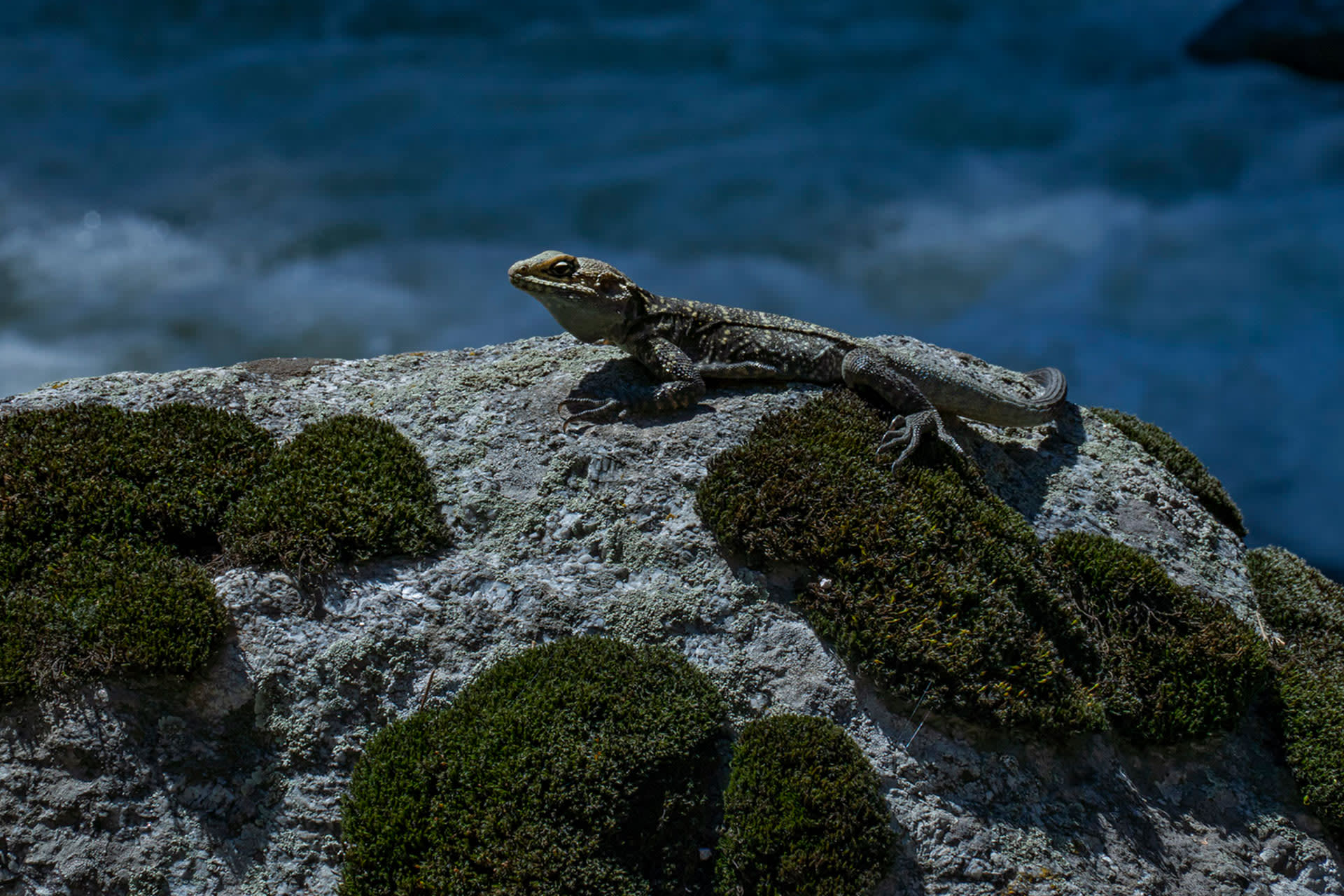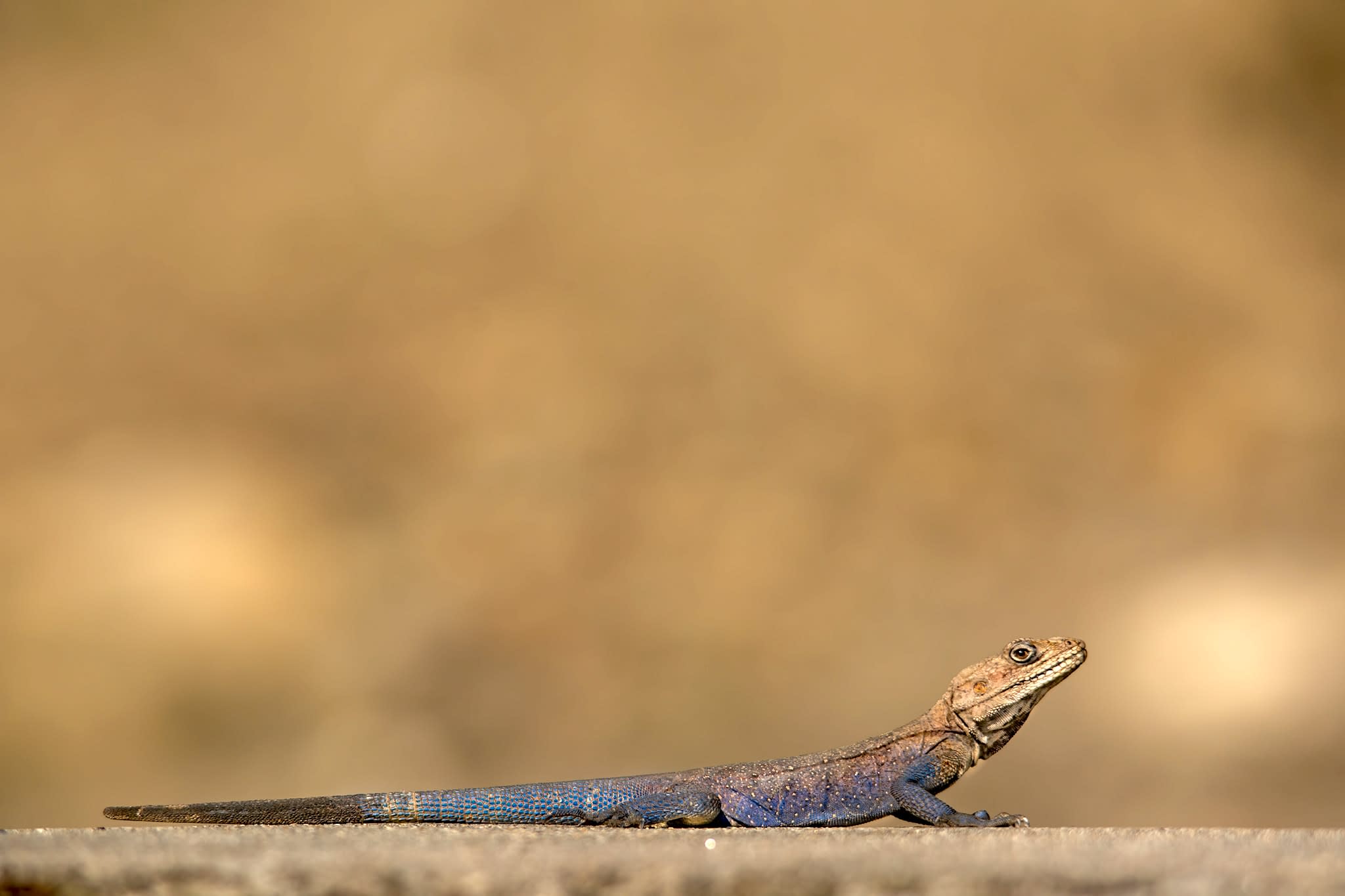 Listen to this article
•
15:34 min
Listen to this article
•
15:34 min
As a reptile admirer, and someone who has no problem sharing space with house lizards, I often find myself in the minority. There’s something about these creatures perched quietly on the corner of my wall that I find endearing. I have never understood how these translucent creatures, waiting for their meal of creepy crawlies, inspire so much fear in some of their human roommates. When I moved back to the mountains in Uttarakhand six years ago, meeting the house lizard’s wild mountain cousins sealed my affection further.
One early summer morning, I sat amidst an oak forest in the empty patch outside my porch, drawing big breaths of crisp mountain air and waiting for some sunshine. As the breeze pushed the clouds apart and the sun shone bountifully on my face, I heard some rustling and noticed an oblong head peeping out from behind a rock. It was a rock agama staring back at me — slender, curious, and agile. I sat motionless, looking as it swivelled its head in sharp motions, did a quick sweep of the area to look for predators, then came out and joined me for a soak in the sun. I was careful not to make any sudden movements, for I wanted to admire its gorgeous, bluish-purple neck, some of that colour also on its body and limbs. I am not sure how long I sat, but when the sun disappeared we both retreated to our respective homes, and I resolved to get to know the purple lizard better.

A male Himalayan rock agama, seen in typical blue-purple breeding colours, surveys the area around him atop a rock near Dehradun, Uttarakhand. Photo: Amitrane/Shutterstock
Cover photo: The Kashmir rock agama (Laudakia tuberculata) is often seen basking on rocky outcrops in mountainous areas of northern Punjab, Himachal Pradesh, Uttarakhand and Kashmir. Photo: Dhritiman Mukherjee
Was it a Himalayan rock agama (Paralaudakia himalayana) I saw that day? I’d like to think so, though I couldn’t be sure. Or was it the Kashmir rock agama (Laudakia tuberculata), that’s also seen in Uttarakhand? Later, I learnt that it’s not that easy to tell from the photographs I took, even for a seasoned herpetologist. Both species are found in parts of the Western Himalayas in India, and in Nepal, northern Pakistan, eastern Afghanistan, and the Tibetan Plateau.
Rock agamas are from the family Agamidae. Not much is known about the rock agamas found in Uttarakhand except perhaps their preferred habitat. Their habitats span forests and rocks, bushes and crags, awnings and crevices, and occasionally compounds of houses. I had spotted my first one years ago, basking in the sun near my home, at an altitude of around 2,000 m. Rock agamas in Uttarakhand can typically be spotted on stone walls in hilly forested areas from 150–3,600m above sea level.
I have also learnt that some males develop a bluish-purple hue during the breeding season, which usually runs from May to August. Was the one I saw a male looking for a mate?

As per an unspoken pact I have with my neighbourhood agamid friends, we let each other be. On cold mornings, we rush out of our shelters and grab stone perches to warm up. I am careful not to startle them. I stay totally still, occasionally stealing glances at their curiously amusing head-bobbing. What fascinates me the most about these diurnal creatures is their colours; they seem to bridge the gap between plain house lizards and colourful chameleons. Their colour doesn’t just indicate gender or season, but could also express moods: being agitated; alarmed; or putting on a display to impress a female.
As the summer days get warmer, it gets increasingly difficult for me to spot agamas in the daytime. In the evenings, when the sun hangs low, some strut out when it’s tea time. Often, a large male comes and plonks himself close by; he has a damaged tail, possibly from combat with another male. He sits, Zen-like, as I watch fixated and sip my tea. He may suddenly jump and catch a buzzing fly, which makes me laugh out loud. When my tea is over and the clouds return, I retreat for cover, much like the agama, albeit with no prize catch. But I always hope that I’ll see my tea-time friend again.






